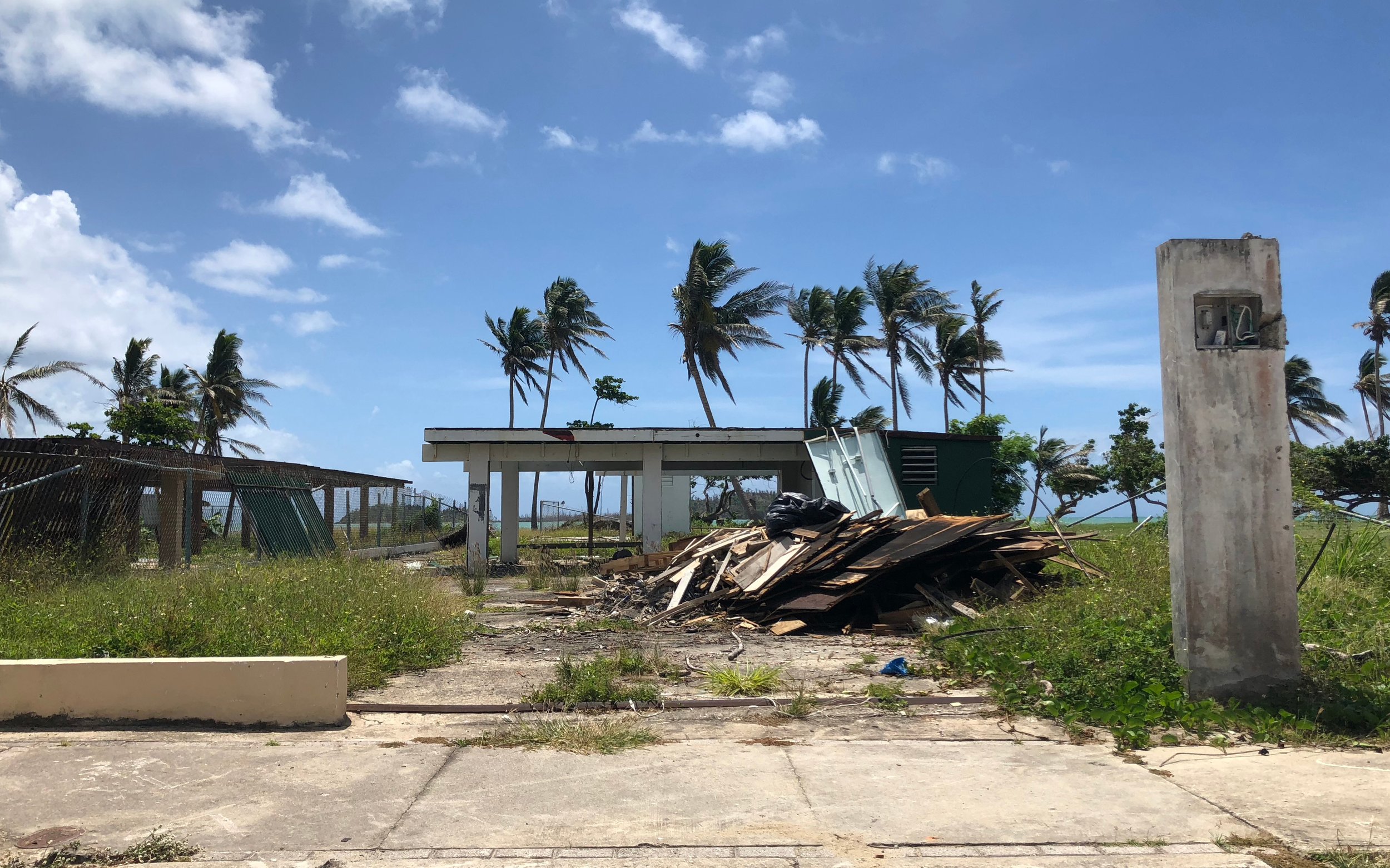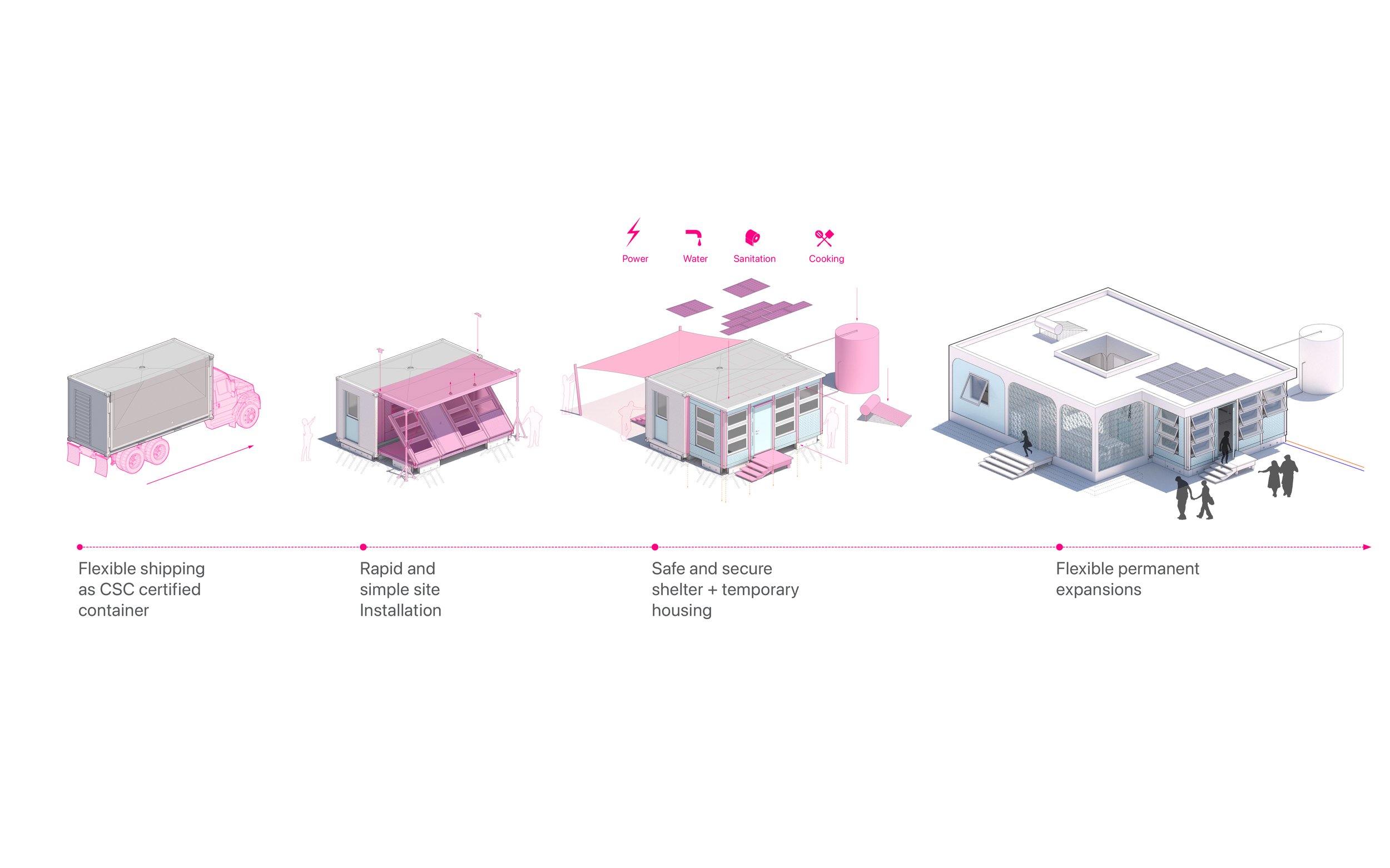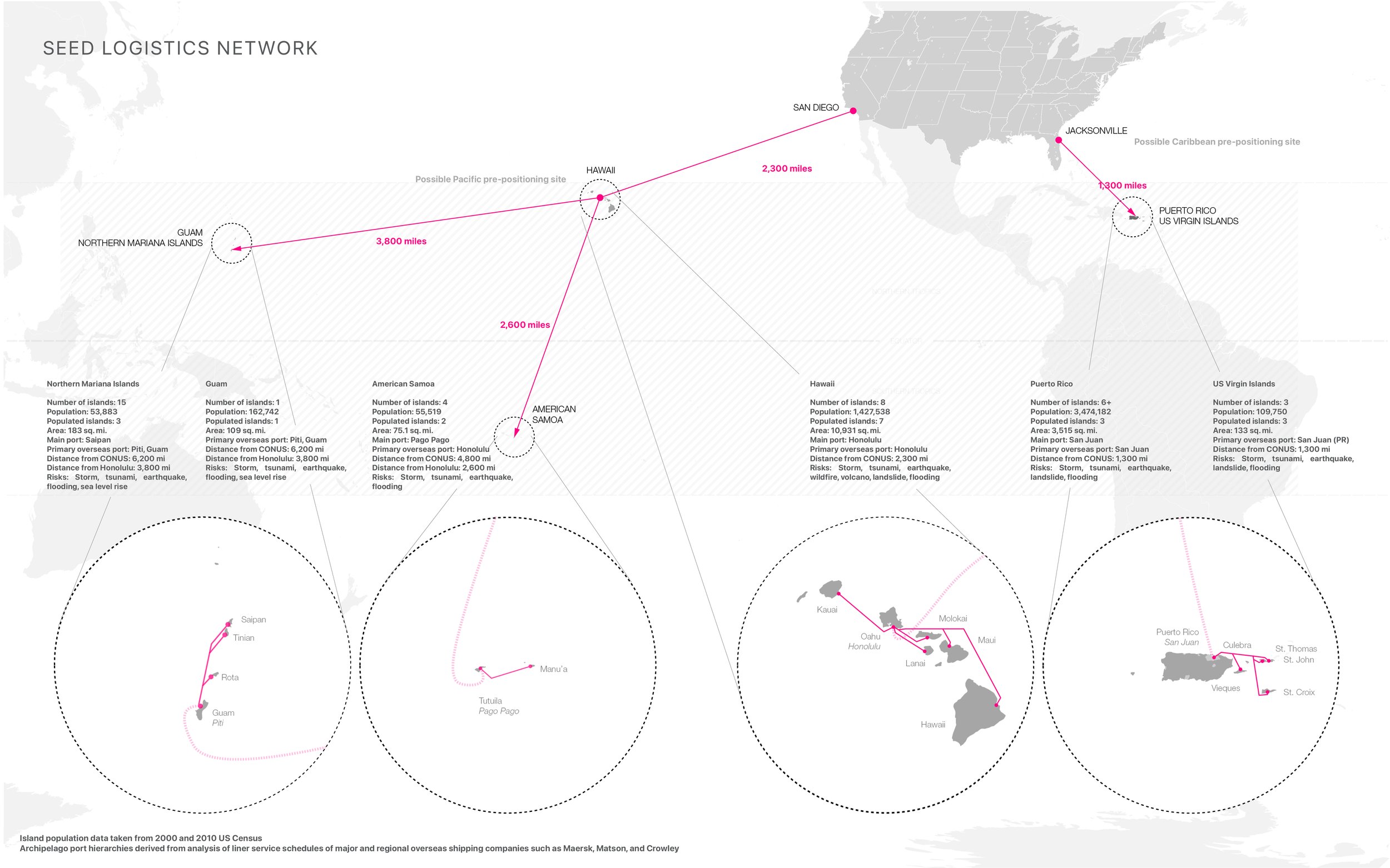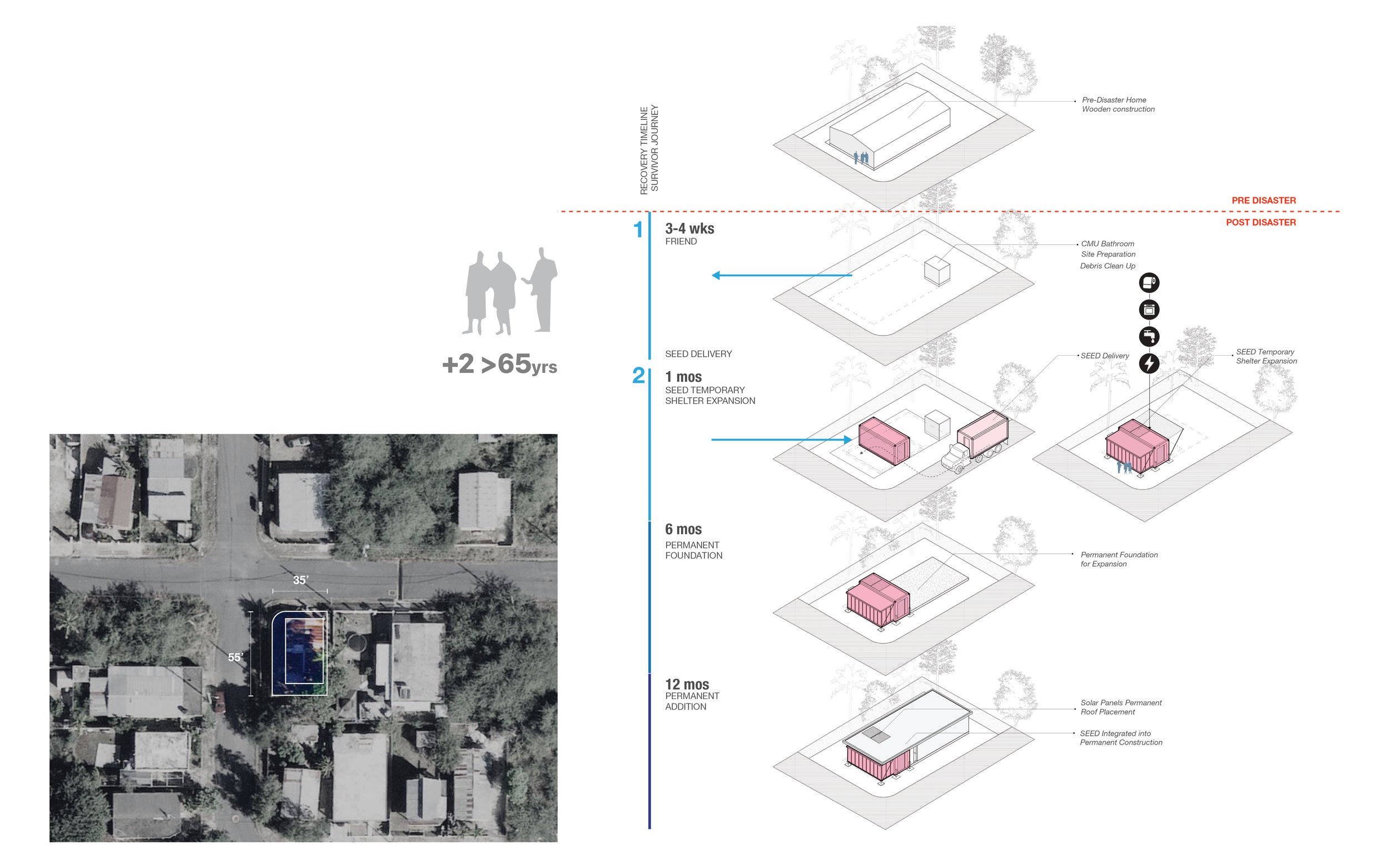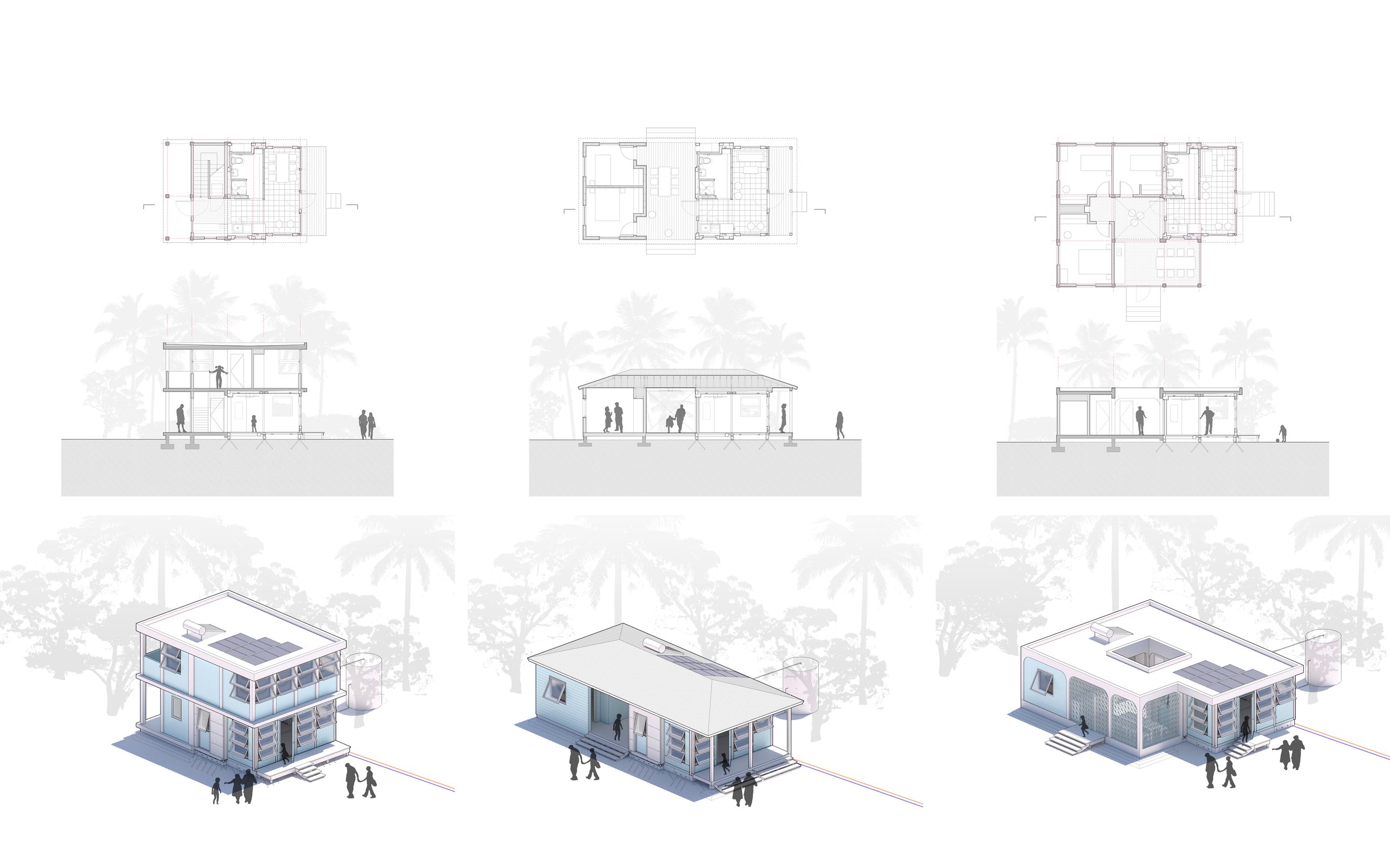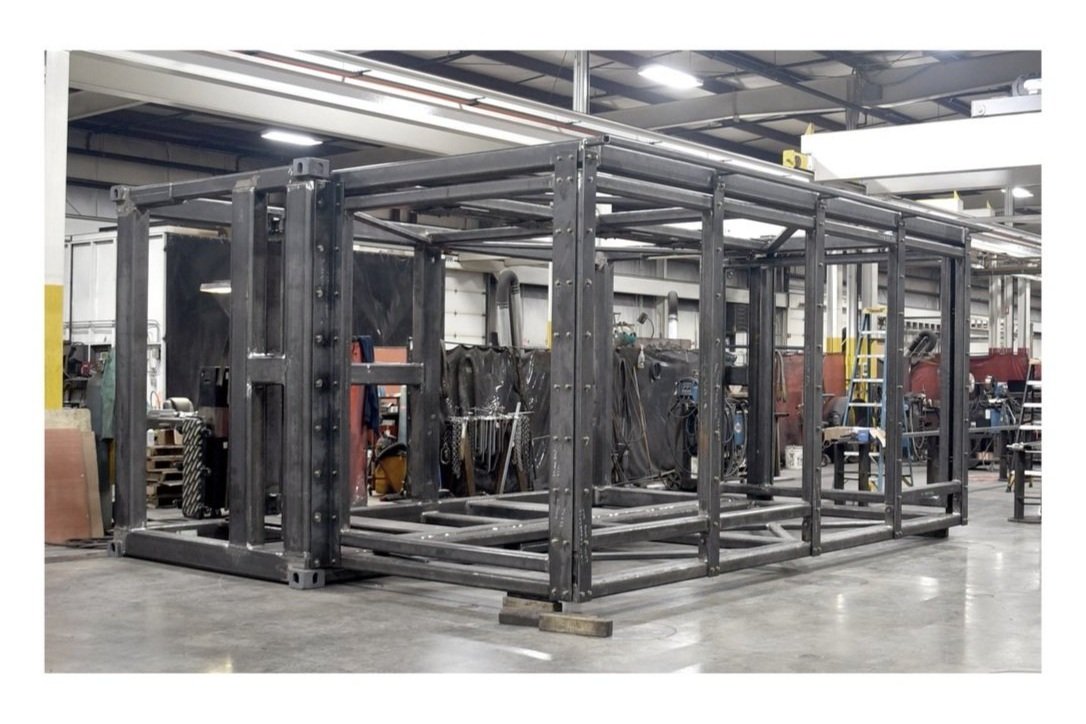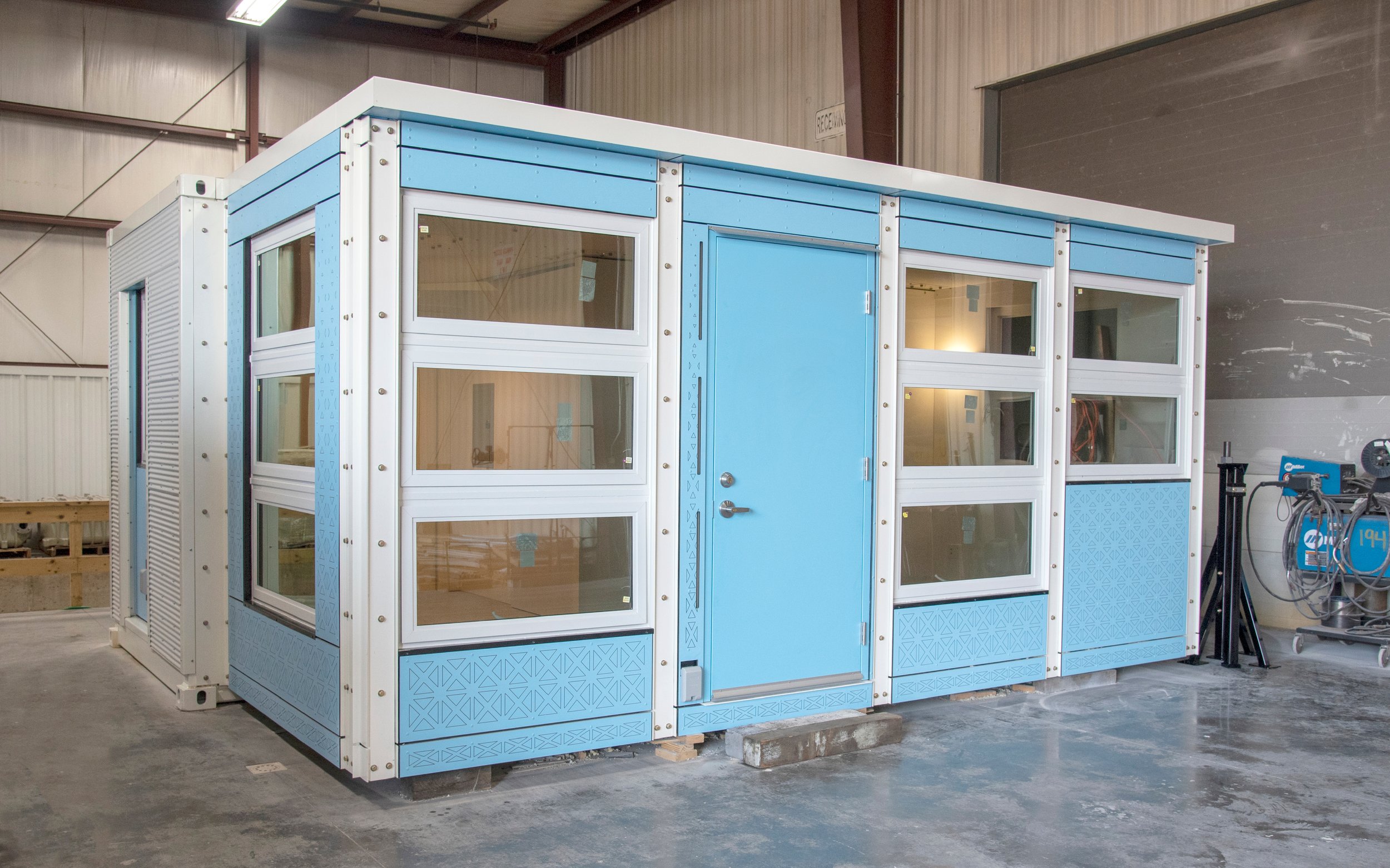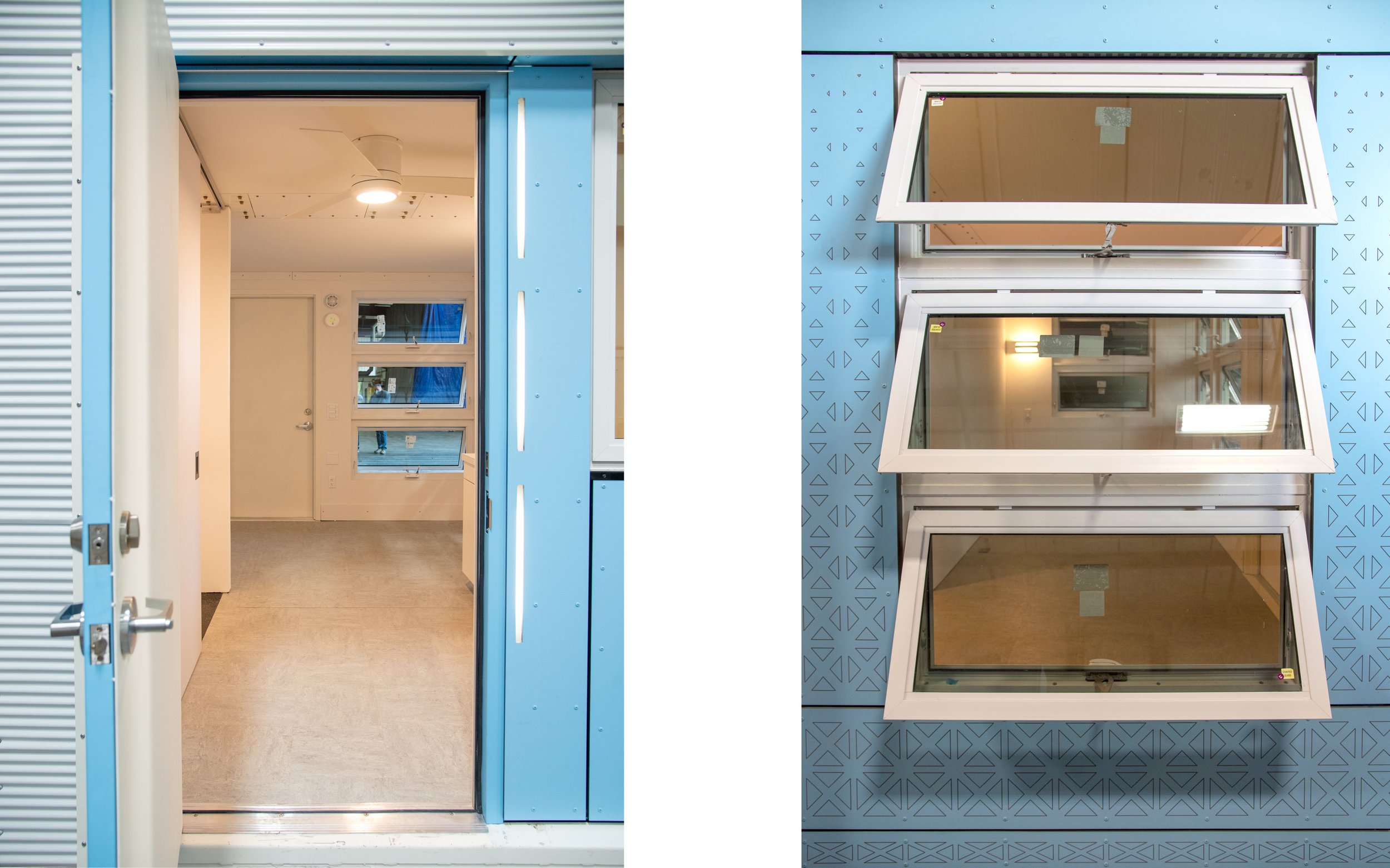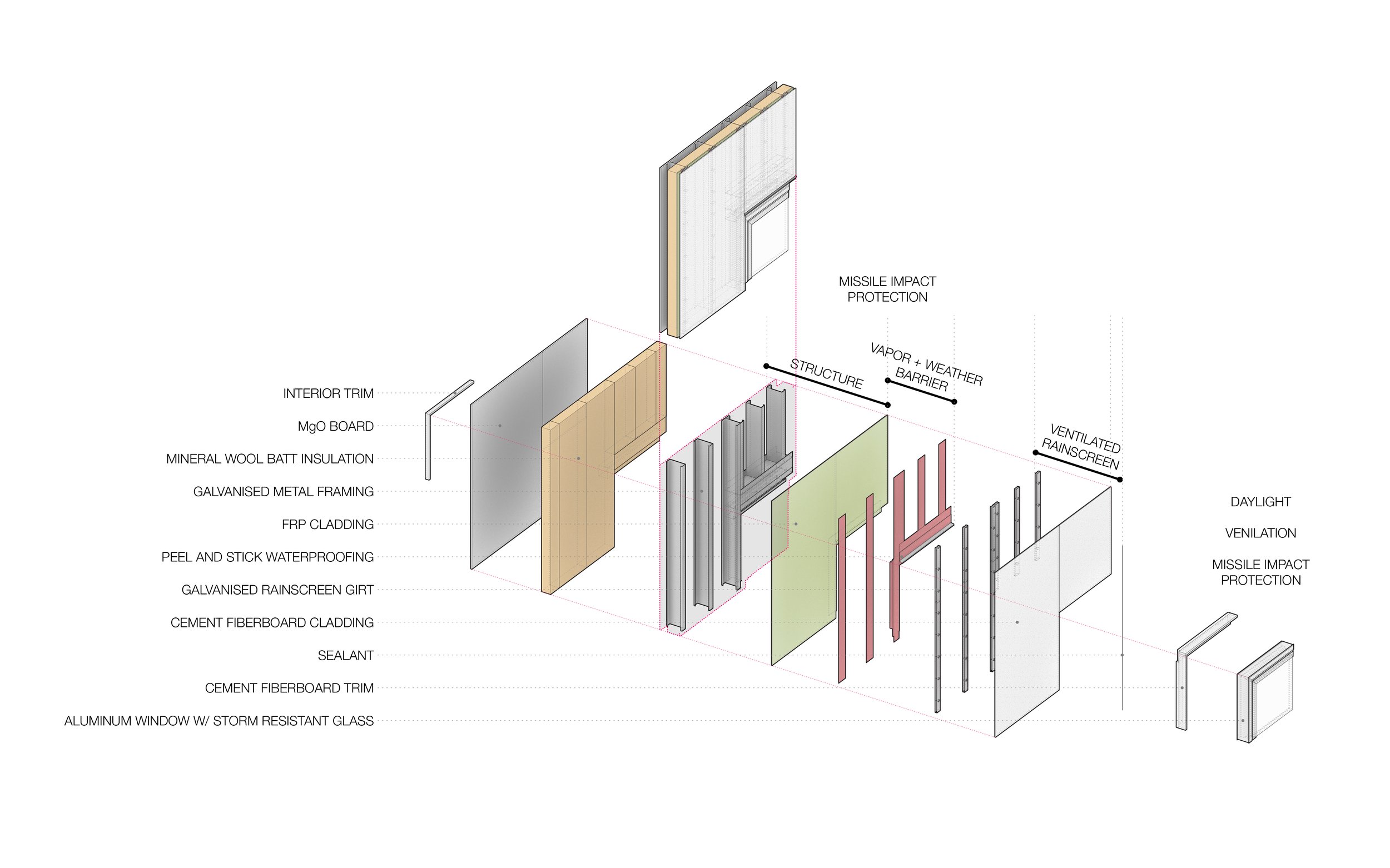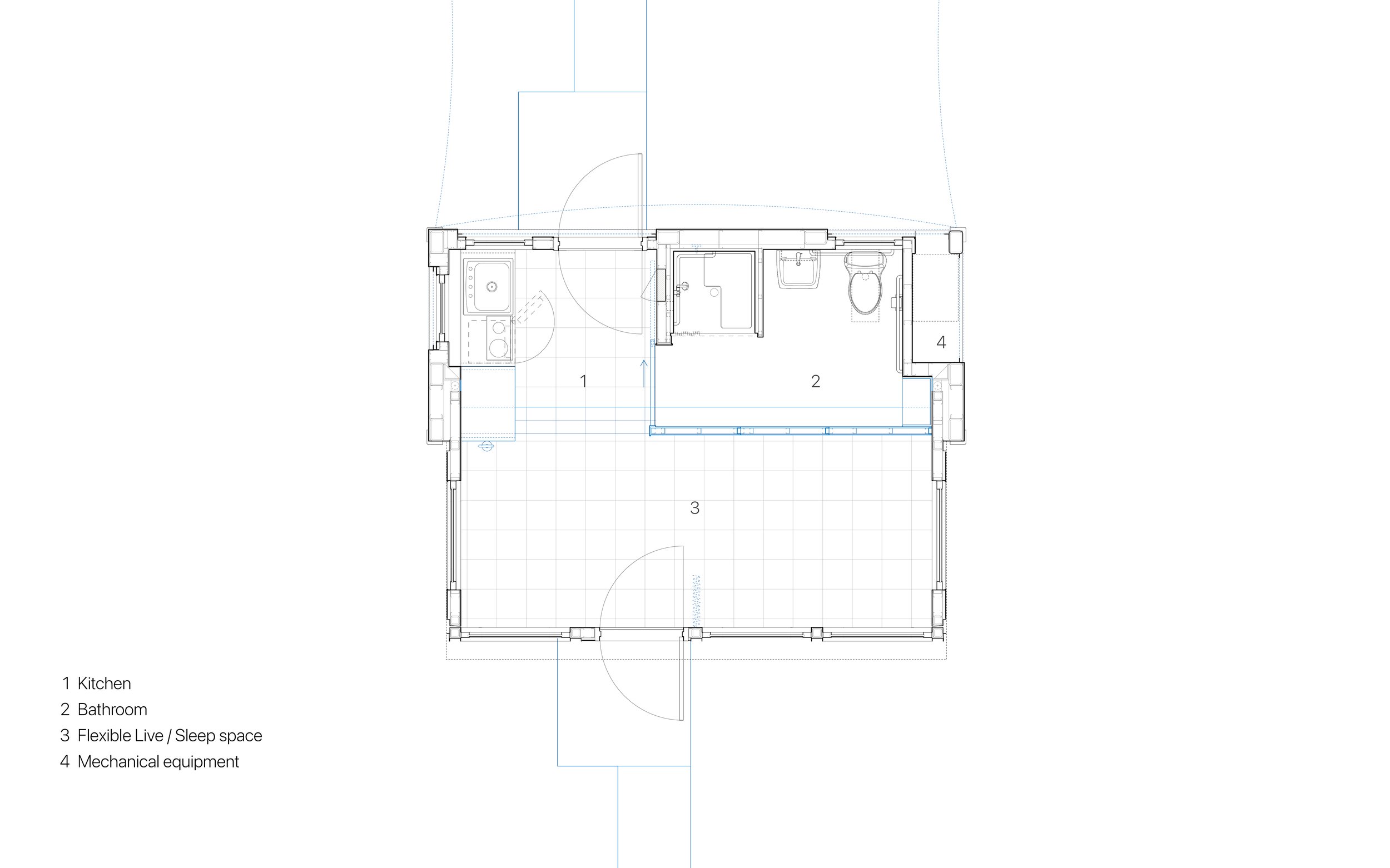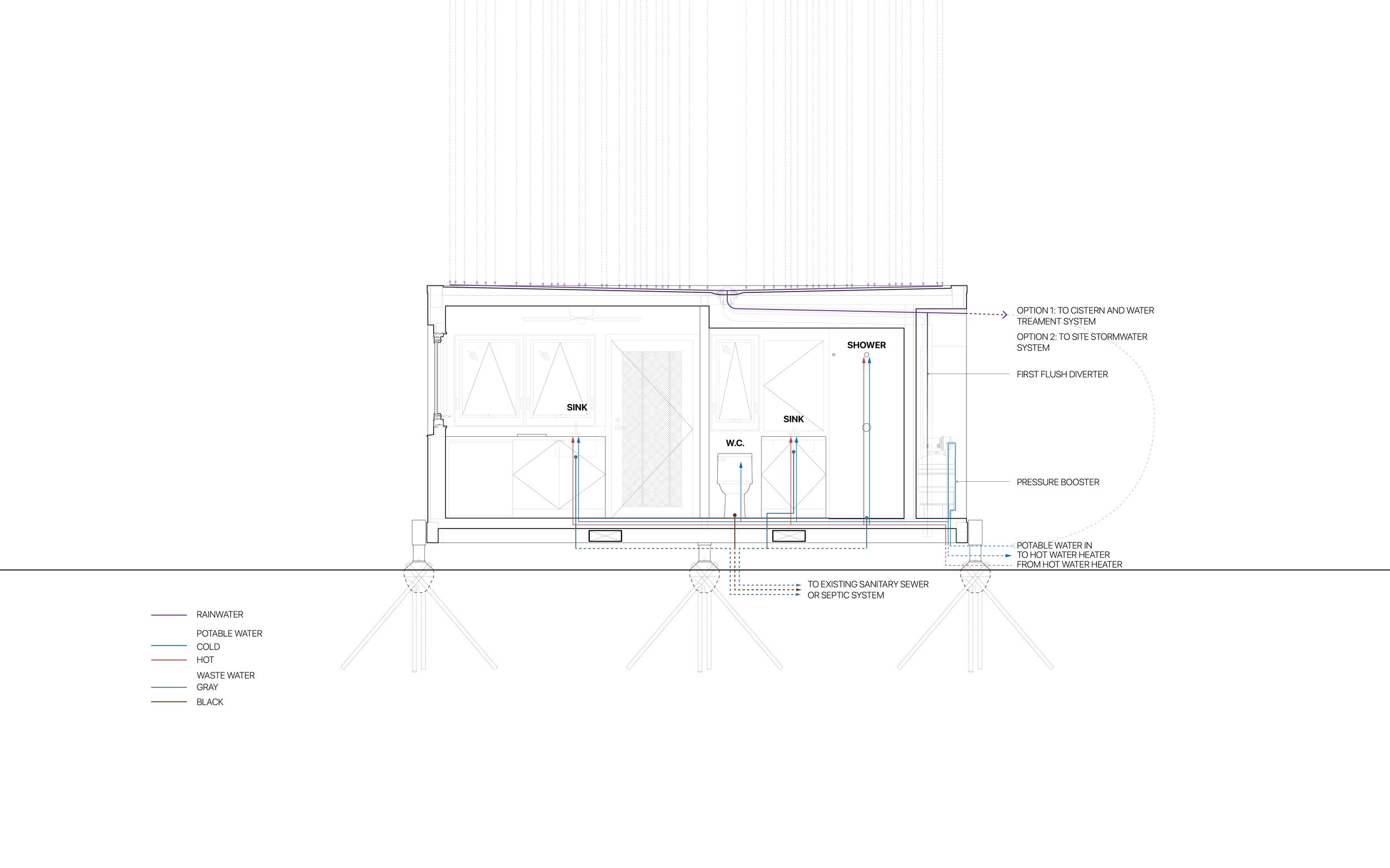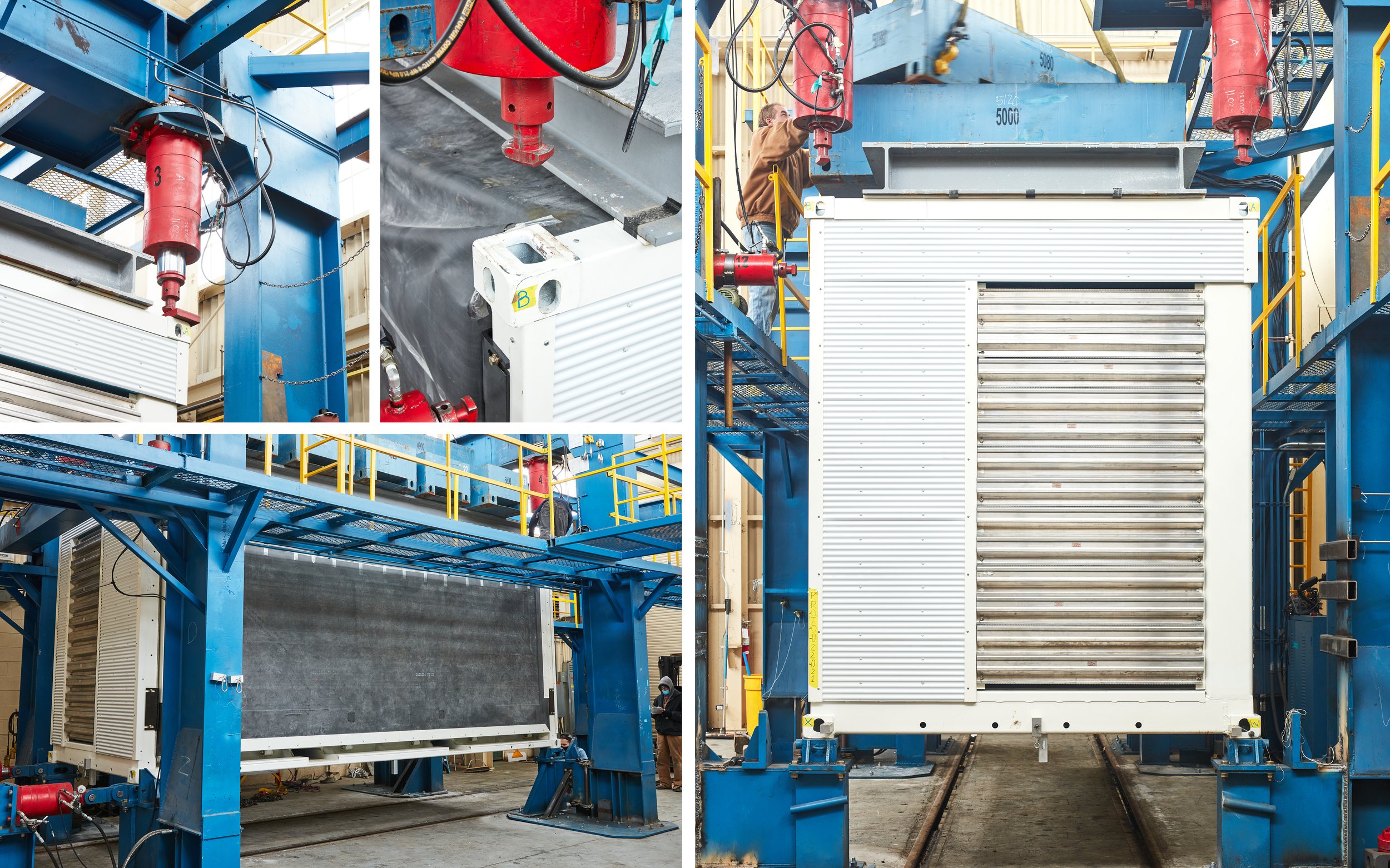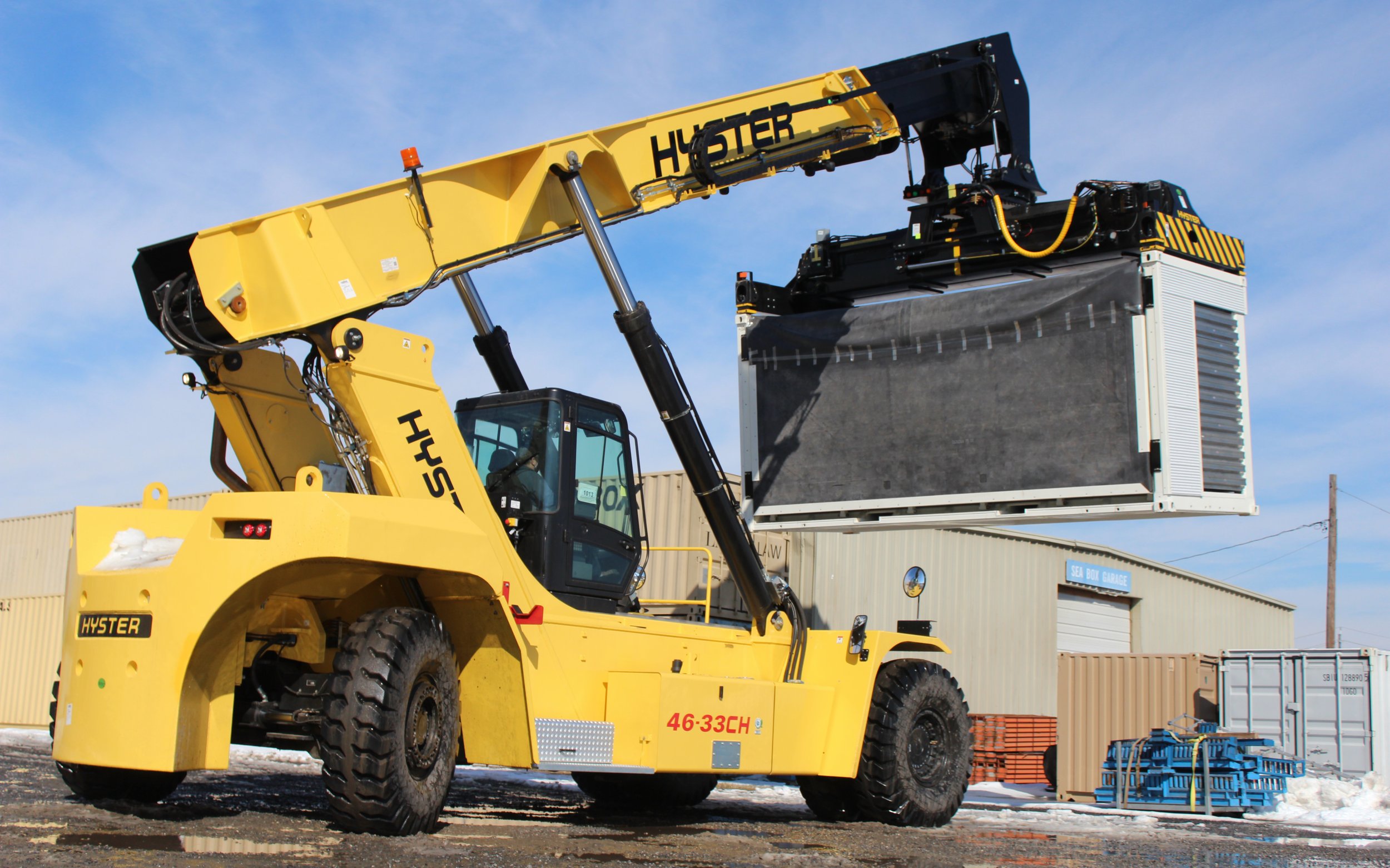SEED
The FEMA SEED (Shelter for Emergency and Expansion Design) is a new prototype model of disaster housing for tropical islands outside the continental United States. Unlike FEMA’s current direct housing options, the SEED can be shipped overseas and meets codes for seismic risk zone II in Hawaii and 195 mph winds in Guam. Once delivered, the unit unfolds to twice its shipping size to become a small ADA accessible home, designed to operate off-grid or on-grid, helping retain survivors in their communities to expedite the recovery process. While the SEED provides temporary housing, it could also support long-term recovery through expansion into a permanent home, customizable to the needs of each survivor family.
The design and deployment process of the SEED takes into account the social, cultural, and environmental parameters documented through extensive fieldwork by our design team on the islands. It enables post-disaster housing construction to engage local materials and labor in its secondary expansion process, but always remains as a safe house during future disaster events.
The first SEED unit has been fabricated and passed container certification testing, clearing it to travel stacked on any container ship. Further testing will include full scale wind loading and water pressure testing as well environmental and cultural acceptance testing on a tropical island. This new safe ‘temp-to-perm’ form of post-disaster housing, when deployed at scale, will significantly improve the recovery process for residents and will substantially advance the safety of island housing stock, reducing future disaster risk for entire communities.
MIT Urban Risk Lab: Miho Mazereeuw, Rich Serino, David Moses, Larisa Ovalles Larisa Ovalles, Lizzie Yarina, Justin Lavallee, Xio Alvarez, Charlotte D'Acierno, Aditya Barve, Mayank Ojha, Jean Carlos Vega Diaz, Rodrigo Escandón Cesarman.
Structural Engineering:
Digital Structures Group: Caitlin Mueller, Associate Professor of Architecture and Civil Engineering, Courtney Steven.
Simpson, Gumphertz and Heger: Paul Kassabian, Michael Richard.
Murray Engineering: Michael Lynch, Jimmy Liang.
Fabrication Partner: American Manufactured Structures and Services; Alan Rand, Gary Sims.
Supported by:
This work relies in part on research funded by FEMA. However, any opinions, findings, conclusions, or recommendations expressed in this material are those of the authors alone and do not necessarily reflect the views of their employer or any funding organization.

